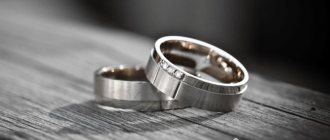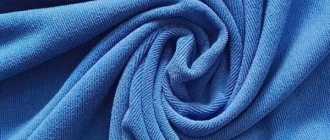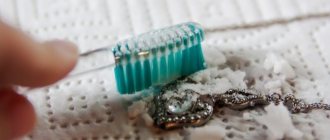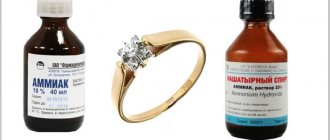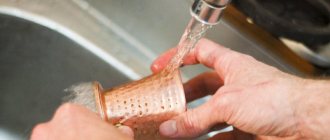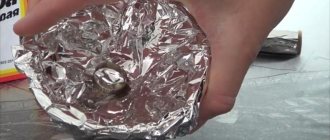The gemstone should be handled very carefully. Any unsuccessful attempt to wash it can turn out disastrously. Every woman who has this jewel in her collection has at least once wondered how to clean pearls at home.
Pearls have always been popular among the fair half of humanity. There is nothing imperfect about this stone. It’s hard to get used to the idea that pearls were created by the depths of the sea, because this wonder of the world has been attracting humanity with its beauty for centuries. Currently, they have learned to cultivate the stone, so not all of it is natural. But this does not mean that there is less beauty and splendor in it. Jewelry with this design is popular among ladies from high society. One has only to look at the stars of yesteryear and today: Marilyn Monroe, Cameron Diaz, Milla Jovovich, Elizabeth Taylor.
Cleaning products
To wash, polish, and clean pearls at home, use filtered, non-hot water, soft hygroscopic fabrics: flannel, velvet, suede, microfiber, cosmetic sponges.
Water
Used if you need to rinse pearls after wearing them. Warm water washes away the remaining sweat, grease, and dust before they become ingrained.
Salt
Jewelry can be cleaned perfectly with very fine salt and water (2.5 tablespoons per half liter of water). It is advisable to spend money on sea food, but regular finely ground food (extra) also works effectively.
There are three options:
- The jewelry is placed in a cotton or linen bag or wrapped in a napkin with salt. Immerse in warm water for half an hour, rinse lightly and massage. Point contamination can be scraped off with a fingernail (without fanaticism).
- To prevent accessories with clasps and metal decor from being scratched, the bag with pearls and salt is not massaged, but placed under running warm water. Wash until the salt dissolves, rinse. Metal is cleaned separately.
- Rings, earrings, and other small accessories are immersed in a warm salt bath for 12–15 minutes. Dry on a towel, polish with velvet cloth or suede.
The procedure allows you to clean the gem and restore its whiteness and shine.
Soap, gel, shampoo
A time-tested way to clean pearls. Children's or soft varieties are taken - without dyes and flavors.
It is not advisable to clean pearls with hard soap: it contains a lot of alkali.
It is important to choose the right cleaning option for your jewelry, especially your necklace.
First:
- A cotton sponge is rubbed with soap, the product is carefully wiped, then rinsed.
- A napkin or cotton pad is moistened with a mixture of liquid soap (two to three tablespoons per liter of water).
- Each pearl is wiped and rinsed with water.
The second is to clean freshwater pearl beads or accessories with small inserts:
- The products are immersed in a weak soapy solution for 8–12 minutes.
- Take out, rinse, dry with a soft cloth.
Dirt and yellowishness are removed.
There will be no soap film left on the surface of the product if it is rinsed after the procedure.
To clean jewelry made from river material, Mallorca, and other artificial varieties (including soufflé), use a makeup brush. To soak, they are immersed in soapy water.
Starch
One of the best folk remedies for cleaning. Potato or corn is suitable:
- starch is thickly sprinkled on velvet cloth or microfiber;
- put a pearl product on top and wrap it up;
- carefully wipe each bead or insert;
- the remaining starch is washed off;
- blot the decoration and leave it to dry.
Starch allows you to get rid of yellowness, polishes, returning the shine of pearls, and “pulls out” excess moisture.
If the products are not very dirty, they are placed in a closed container with starch. Shake for a few minutes, remove the jewelry, and wash.
Sun
Sunbathing (several hours) whitens pearls. More than one session may be needed. The main thing is not to overheat the jewelry and wrap it with a soft cloth after the “therapeutic” procedure.
Paste
The easiest way to clean pearls is to use jewelry pastes. The product is applied to a napkin, which is used to wipe the beads or inserts. Next, the product is rinsed and dried. Dirt is removed guaranteed and effortlessly.
Disadvantages: pasta is expensive, not always available ; Pearls wear out due to frequent use.
What are pearls?
Natural pearls are a solid substance consisting of mother-of-pearl. It is formed in the shells of mollusks - in the so-called pearl oysters. Pearls are mined in the natural environment or in artificially created conditions.
Depending on the place of extraction, it happens:
- nautical;
- freshwater (river).
Pearls are widely used in the manufacture of jewelry: rings, earrings, bracelets, beads, brooches and many others. The stones are set in silver, gold, platinum, and in all cases they look very dignified and presentable. The final cost of the item is usually determined by the origin, color, size and shape of the stone, as well as the metal in which the pearl was set.
Black pearls are one of the rarest and most unique species found in nature.
Recently, you can often see on sale artificial material that is created from glass and then painted in the desired color. Over time, the beads lose a significant part of the dye and look unaesthetic. Of course, in terms of their properties, these “pearls” have nothing in common with real jewelry.
Let's talk in more detail about how to properly care for pearls.
In one pearl oyster you can find from one to several pearls
How to restore shine
Olive oil can revive tarnished pearls:
- Apply three to four drops onto a cotton swab;
- Each pearl is carefully wiped;
- residues are removed with a dry paper napkin;
- The beads are polished with flannel.
There is no need to overdo it with oil: it will flow into the hole of the beads and attract new dirt.
To make pearls shine, they are treated only with highly refined olive oil, preferably not expired. Other vegetable oils - sunflower, corn, almond - clog the pores of the pearls, thereby destroying them completely.
At the same time, the oil removes dirt.
Basic rules for caring for pearl jewelry
If not properly cared for, jewelry can fade, turn yellow, turn black, and even peel. To prevent this from happening, follow these simple rules:
- Do not expose stones to the sun. UV rays have a detrimental effect on the appearance of beads, which become dull and stop shining.
- Always remove jewelry before taking baths. Also, do not wear pearls before going outside in rainy weather. Excess moisture negatively affects the condition of jewelry.
- Wear jewelry only after applying perfume . Essential oils and alcohol can damage the surface of the pearl (especially pearl beads and necklaces). The same rule applies to hairspray, deodorant and other cosmetics.
- After each wear, try to wipe the products with a damp cloth to remove dust and sebum from the beads.
- Store jewelry in a clean, dry place , wrapped in soft material such as velvet.
- , replace the thread regularly and do not forget to tie knots between the beads. This way you will protect the pearls from rubbing against each other, and also prevent dirt and moisture from getting inside the hole of the bead.
- Under no circumstances should pearls be cleaned with steam or ultrasonic devices. This will ruin the stone. The use of ammonia products, acids and compounds containing chlorine is also prohibited.
By following the basic rules for caring for pearl jewelry, you can avoid serious damage to the surface of the stone.
How to clean framed items
Processing pearl jewelry with metal is more troublesome. After all, you need to properly clean both the frame and the gem, and with different means.
The composition used to clean metal jewelry should not come into contact with pearls. If this happens, the bead is quickly washed with water.
Dirt from the relief of jewelry and the gaps between the insert and the metal is removed with a wooden toothpick.
Gold
To clean gold-framed jewelry, choose one of the following methods:
- moisten a stick with cotton wool with ammonia and gently wipe the metal;
- Cosmetic powder (baby powder, chalk powder) is poured onto the flannel and the metal is polished.
Pearl inserts can be cleaned with soapy water. The decoration is rinsed twice and left to dry.
The noble metal gets dirty quickly, so experts advise refreshing gold accessories every two to three weeks.
Silver
Silver products are “renewed” four to six times a year. The procedure is as follows:
- extinguish soda with vinegar or ammonia;
- Lubricate the metal with the mixture.
While the silver is “soaking,” wipe the pearls with a cloth moistened with soapy water.
After half an hour, rinse twice with warm water and wipe the product well.
What is not recommended to do
Pearls, after several years, lose their original color - they become cloudy. This happens because the gem contains only 2% liquid. Because of this, at high temperatures it dries out, exfoliates, and at high humidity it becomes faded and dull. A very whimsical gem.
But there are some rules that will help protect it from loss of beauty. But first you need to know what you should never do with pearl jewelry:
- Clean with a toothbrush. This item has a hard coating that will ruin the surface of the stone. Cleaning with detergents, soda, and vinegar is also not allowed.
- Spray the decoration with perfume or eau de toilette. If these perfumes come into contact with the surface of the necklace, the color of the pearls will turn reddish.
- Take a bath in them.
What is prohibited in cleaning pearls?
When manipulating a gem, the following are contraindicated:
- hot water, steam;
- window and dishwashing detergents;
- nail polish remover, other solvents;
- soda, alkaline cleaners;
- vinegar, other acids;
- alcohol, including ammonia;
- abrasive powders;
- ultrasound;
- It is prohibited to use brushes or synthetic sponges.
They will cause pearls to become dull, scratched, or lose their nacreous layer.
Why do you need to care for pearls?
There are three types of pearls:
- natural, created by the sea;
- cultivated, in conditions close to marine ones;
- artificially grown (freshwater).
When a grain of sand enters the shell, the oyster begins to produce special substances that coat it. It is the layers of these substances that create the shine of mother-of-pearl.
“Sea stone” does not tolerate acids and ammonia. It has high impact resistance, but can be damaged if it hits other jewelry.
On the Moss scale, the hardness of a marine formation (resistance to damage) is rated from 3 to 4. While the same indicator for house dust is 7. Therefore, wiping a stone with a dry cloth means causing irreparable harm to it.
Restoring mother of pearl
To avoid having to look for information on how to restore mother-of-pearl on pearls, periodically give your jewelry sea baths in moderately salty water. Do not keep items in a box for months. Legend has it that forgotten pearls die.
People often look for information on how to restore pearls if the top layer has worn off. Jewelers usually use a 5-6% solution of acetic and hydrochloric acid. The damaged shell dissolves in an acidic environment, revealing a new, shining layer underneath. Just do not overexpose the beads in the solution, otherwise the decoration will be damaged.
We offer you simple and effective ways to clean pearls.
There are several ways to clean pearls.
- Soap solution. From time to time you need to take baby soap and, adding warm water, whip up the foam. Then, using a soft cloth, carefully treat each pearl with this foam. After this procedure, the pearls must be wiped with a soft cloth, periodically rinsing it in clean warm water. It should only be dried in a horizontal position, spread out on a soft cloth. Because when hanging dry, the thread stretches.
- Jewelry professionals use a very weak solution of acetic or hydrochloric acid to clean pearls.
- You can also use tooth powder to clean pearls. To do this, you need to place the pearls in the composition and then soak them in a very weak solution of malic or hydrochloric acid.
- Homemade pearl cleaning also allows for the use of potato starch. If you rub each pearl with starch, it will remove dirt and excess moisture.
- Olive oil is used to restore the natural shine of pearls. A small amount should be applied to a soft cloth and wiped over each pearl. Excess should also be removed after the procedure with a soft cloth.
How to straighten fishing line on a necklace
Another common problem is deformation of the string of a necklace or beads. Try to avoid this, because almost always the root of this problem is improper storage, transportation or wearing of jewelry.
Gold necklace with cubic zirconia (go to the SUNLIGHT catalogue)
Straightening beads on a fishing line is quite difficult, because you need to act extremely carefully so as not to damage the decorative elements. The most gentle way is to hang the necklace in a warm place (for example, near a radiator) and lightly weigh it down with a weight so that the fishing line straightens.
You can also straighten the fishing line on an invisibility necklace using steam from a steamer or an iron with the appropriate option. But you need to apply steam carefully, only to the problem area and in no case to the pebble!
Special silicone fishing lines are used in the production of jewelry. Sometimes their deformation is irreparable, and the base has to be changed, which is difficult to do without the proper skills.
Pearl necklace - proper cleaning
The classic string of pearls is based on nylon or silk. Natural threads wear out faster than mother-of-pearl beads, lose elasticity and accumulate dirt. That is why they need to be cleaned, even if visually the beads themselves do not seem dirty.
The problem is that the soap solution mentioned above as a tool without which not a single pearl cleaning can be done is not suitable for silk or nylon thread. You need to take care of strings of pearls with double diligence, dividing the process into several stages:
- cleaning beads;
- cleaning the thread.
The first ones are enough to wipe with a cloth soaked in a soap solution, followed by treatment with a clean rag. You can clean the thread safely and conveniently in potato flour. The product is left in a container with flour for a day, after which the excess is removed and rubbed with a clean cloth.


